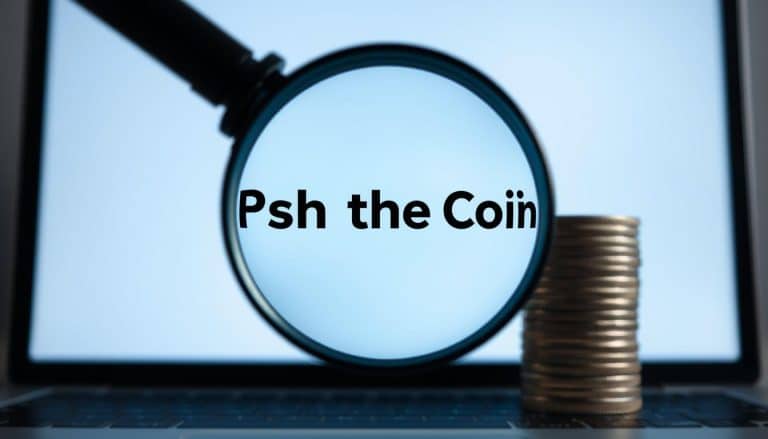Insider Tips for Navigating the Wild World of Altcoins: Mastering Digital Currency Strategies
Venturing into the vibrant world of altcoins can be both exciting and daunting.
With the crypto market evolving rapidly, it’s crucial to stay informed and make strategic choices.
Staying current and well-researched will increase your chances of finding successful investment opportunities in altcoins.
Whether you are a beginner or an experienced investor, understanding the world beyond bitcoin and ether is essential.

Altcoins represent a significant part of the cryptocurrency market. They offer unique features that promise innovation and growth potential.
Knowing what each type offers can help you make smarter investments.
From assessing the market to selecting the right altcoins, you’ll need to look at all factors that can impact your investments.
Your success with altcoins also depends on building a diverse portfolio and timing your trades wisely.
Exploring various strategies and leveraging exchange platforms can play a critical role in maximizing returns.
Learning how to decode market signals will also guide you in making informed decisions.
Key Takeaways
- Diversify your altcoin portfolio.
- Stay informed with market signals.
- Use strategic timing for altcoin trades.
Understanding Altcoins
Altcoins are alternative cryptocurrencies that are not Bitcoin. They use blockchain technology but often have unique features or purposes.
Each altcoin seeks to improve upon areas where Bitcoin might fall short, such as processing speed or transaction costs.
There are over 10,000 altcoins in the market. This offers many opportunities but also brings risks.
Some of these coins, like Ethereum and Ripple, have become well-known for their distinct purposes. Ethereum, for example, allows developers to build decentralized applications on its blockchain.
When you invest in altcoins, you should be aware of their potential for higher returns compared to well-established cryptocurrencies like Bitcoin. However, remember that with high return potential comes increased risk.
Altcoins can be very volatile, and their value can fluctuate rapidly.
Key Types of Altcoins:
- Stablecoins: Pegged to stable assets like the US dollar to reduce volatility.
- Utility Tokens: Provide access to a service or product within a blockchain ecosystem.
- Security Tokens: Represent ownership in an asset or company and are subject to regulations.
One fascinating group of altcoins is meme coins, which often start with little value or practical use. Bitcoin enthusiasts might dismiss them, but their communities can grow aggressively, driving up their value.
Staying informed about the altcoin market is crucial.
Keep up with industry news to understand market trends and investment opportunities.
For more detailed guidance on investing in altcoins, you might find Exploring Altcoins: A Beginner’s Guide useful.
Major Types of Altcoins
Altcoins come in various types, each serving a different purpose in the cryptocurrency ecosystem. Understanding these categories can help you make informed decisions, whether you’re investing or just exploring the technology.
Payment Coins
Payment coins are designed to be used as digital cash. They aim to facilitate faster and cheaper transactions compared to traditional currency.
Bitcoin is the most famous example, but many altcoins, such as Litecoin and Dash, also fall into this category.
These coins prioritize security and decentralization. They rely on blockchain technology to validate and record transactions.
As more businesses accept cryptocurrencies, payment coins are gaining wider adoption. However, they can face issues like transaction speed and scalability, which developers continuously work to improve.
Utility Tokens
Utility tokens are a popular type of cryptocurrency used mainly within a specific platform. They give users access to goods and services.
One example is Ethereum, which powers applications and smart contracts.
These tokens are not intended as direct investments. Instead, they represent future access to a company’s product or service. Their value fluctuates based on the demand for their underlying platform.
Platforms like Binance use utility tokens to offer discounts and other benefits, making them attractive for users within that ecosystem.
Security Tokens
Security tokens represent ownership of a real-world asset. They are a digital version of traditional securities like stocks or bonds.
These tokens give holders rights, such as shares in future profits or voting in company decisions.
Regulated by securities laws, they offer a more secure investment compared to other types. Security tokens provide the liquidity of digital assets while adhering to traditional finance rules.
Their launch requires compliance with regulatory frameworks, adding a layer of trust. Security tokens are steadily gaining traction as a bridge between traditional and digital finance.
Stablecoins
Stablecoins offer a solution to the volatility seen in other cryptocurrencies. They are pegged to a stable asset like the US dollar.
This stability makes them ideal for daily transactions or as a store of value in volatile markets.
Leading examples include Tether (USDT) and US Dollar Coin (USDC). These coins provide the benefits of crypto transactions—speed and security—without the wild price swings.
Many use them as a safeguard to preserve value or as a means to move money between exchanges quickly. Despite their advantages, it’s crucial to consider the backing and trustworthiness of the issuing organization.
Assessing the Altcoin Market
To evaluate the altcoin market, consider factors like volatility and trends. Altcoins can be unpredictable, so it’s crucial to stay updated on market changes.
Key metrics to watch include price movements, trading volume, and market capitalization.
Create a list of altcoins you are interested in. Track their performance regularly. This helps identify patterns and potential investment opportunities.
Consider tools for technical analysis. Charts and graphs can show important data, like support and resistance levels. Analyze these to understand market behavior better.
Stay informed through reliable sources. For example, Insider Tips for Navigating the Wild World of Altcoins provide insights on current market conditions and strategies.
Factors to Monitor:
- Price Trends: Look for consistent price growth.
- Trading Volume: High volume can indicate strong market interest.
- Market News: Important events or news can influence prices.
Understanding the technology behind altcoins is also helpful. Some have unique features that set them apart.
For example, smart contract capabilities or privacy features can add value to certain altcoins.
Use a combination of fundamental and technical analysis. This approach improves your ability to make informed investment decisions.
Building a Diverse Portfolio
Creating a diverse portfolio is crucial when investing in altcoins. A mix of various types of cryptocurrencies and strategies can help you manage risk better and improve potential returns.
Portfolio Allocation Strategies
When building your crypto portfolio, consider spreading your investments across different types of cryptocurrencies.
You might include large-cap coins like Bitcoin and Ethereum for stability, mid-cap coins for moderate growth, and small-cap coins for high potential gains. This approach balances risk and return.
Sector diversification is another important strategy. Altcoins belong to different sectors such as finance, gaming, and supply chain.
You might invest in coins from different sectors to spread risk and take advantage of growth in various areas.
Allocating funds to coins that support different blockchain technologies can also be beneficial. This tech diversification helps you benefit from various innovations across the crypto world.
It provides exposure to promising projects that might gain wider adoption.
Risk Management in Altcoin Investing
In the world of altcoins, risk management is essential.
Start by assessing your risk tolerance. Consider how much you are willing to lose, as altcoins can be volatile.
Risk can be managed by only investing a portion of your total portfolio in altcoins.
Regularly review your portfolio. This helps in identifying any shifts in risk levels due to market changes or price movements.
Staying informed about news in the crypto space is important, as developments can impact risk.
Using stop-loss orders can further protect your investments. These can automatically sell your coins if prices drop to a certain level, safeguarding your funds from significant losses.
Limit investments in newly launched coins without proven track records. They can be tempting but carry higher risks.
Researching Altcoins Effectively
To make informed decisions about altcoin investments, you need to focus on several key areas.
Understanding white papers, analyzing historical performance data, and gauging developer activity and community support are essential steps in your research process.
Analyzing White Papers
White papers provide crucial insights into an altcoin’s purpose and potential. They explain the technology and objectives behind the coin.
Look for clarity: a well-written white paper should clearly state the problem the altcoin aims to solve and how it plans to do so.
Technical details are important too. The paper should outline the technology used and how it improves upon existing solutions. Assess the feasibility of these technical claims.
Finally, consider the team. Does the white paper include information about the developers and advisors? The experience and credibility of the team can impact the project’s success.
Historical Performance Metrics
Reviewing an altcoin’s historical performance helps you understand its market behavior.
You should examine price trends over time. Look for periods of significant growth or decline and try to identify possible causes.
Assess trading volume to gauge interest levels. High trading volume can indicate strong investor interest, while low volume may suggest limited appeal.
Comparing the performance of an altcoin to major coins like Bitcoin and Ethereum may also offer insights.
If an altcoin consistently outperforms others during market shifts, it could mean a stronger or more stable project.
Developer Activity and Community Support
Developer activity is a strong indicator of a project’s viability. Check platforms like GitHub to see the frequency of updates and how actively developers are working on improvements.
Consistent updates suggest ongoing development and potential growth.
Community support also plays a significant role. A large, active community can provide feedback, drive adoption, and increase a project’s visibility.
Engage with community forums and social media to gauge sentiment and support.
Strong developer engagement combined with robust community involvement can indicate a healthy altcoin ecosystem. They often reflect commitment to the project’s long-term success and adaptability to market changes.
Decoding Market Signals
Understanding market signals is key when dealing with altcoins. They can guide your buying and selling decisions, helping you to maximize potential gains. Market signals are indicators based on market data and trends.
Types of Market Signals:
-
Price Trends: Look for patterns in price movements. A steady increase or decrease indicates a trend.
-
Trading Volume: High trading volume with price change can signal a trend direction.
-
News and Events: Keep an eye on major news or events impacting the market.
Tools You Can Use:
-
Charts and Graphs: Visual tools help you see patterns in price and volume. Use candlestick charts for detailed insights.
-
Technical Indicators: Tools like moving averages or the Relative Strength Index (RSI) provide deeper analysis.
-
AI and Data Analytics: Tools with AI can interpret complex data for you, making your decision-making process easier.
Practical Tips:
-
Stay Informed: Regularly check financial news and updates about altcoins.
-
Set Alerts: Use platforms that allow you to set alerts for significant changes in the market.
-
Monitor Consistently: Consistent monitoring helps you react quickly to changes in market signals.
By interpreting these signals accurately, you can make smarter trading decisions and navigate the world of altcoins with confidence.
Timing Your Trades
Timing your trades in the world of altcoins is crucial. The market is known for its volatility, which creates both opportunities and risks.
To make the most of these opportunities, you should focus on understanding market trends and patterns.
Bull and Bear Markets
In a bull market, prices are generally rising. This may be the right time to buy altcoins and hold them for gains. However, during a bear market, prices are falling. It’s often better to be cautious and consider selling before losses deepen.
Key Indicators to Watch
Some indicators can help you time your trades better:
- Trading Volume: A sudden increase in trading volume can mean big price changes.
- Price Trends: Look for patterns such as double tops or bottoms.
- Moving Averages: Use moving averages to spot trend reversals.
Patience is Key
Experienced traders often say that patience is crucial. Waiting for the right entry and exit points will often yield better results than rushing in.
Avoid chasing quick profits. Instead, focus on long-term strategies and stable investments.
Keeping an eye on key indicators and understanding market conditions allows you to make informed decisions. For more detailed advice, exploring tips from expert traders could be helpful, such as those shared by Michaël van de Poppe.
Security Measures in Altcoin Trading
When trading altcoins, ensuring the security of your digital assets is essential.
Understanding how to secure your wallet and identify potential scams will help protect your investments.
Securing Your Wallet
Your wallet is your gateway to managing altcoins, so it’s important to keep it secure.
First, use a reputable wallet provider that is well-reviewed for security.
Consider wallets that offer two-factor authentication (2FA) because they add an extra layer of protection.
Hardware wallets are a great option as they store your altcoins offline, making them less vulnerable to cyberattacks.
When setting up your wallet, always create a strong, unique password, and back up your seed phrase in a safe place, away from online access.
Regularly update your wallet software to protect against vulnerabilities.
If you’re trading on exchanges, only keep funds you need for trading. Move large amounts to a more secure, long-term wallet.
Recognizing Scams and Frauds
With the rise in altcoin popularity, scams have become more common. You must be alert to any signs of fraud.
Always verify the legitimacy of the website or app before sharing sensitive information. Scammers often use fake websites that look identical to legitimate ones.
Avoid schemes that promise guaranteed high returns with little effort. These are often Ponzi schemes and too good to be true.
Be skeptical of unsolicited investment advice, especially through social media or email.
If you find a new altcoin investment opportunity, conduct thorough research. Look for credible reviews, a transparent team, and clear project goals. Engage in forums to see discussions about the altcoin’s credibility. Being informed reduces your risk of falling victim to scams.
Leveraging Exchange Platforms
Navigating exchange platforms for altcoins involves selecting the right exchange for your needs and understanding the different fees involved. These aspects are crucial for efficient and cost-effective trading.
Choosing the Right Exchange
Selecting an exchange platform is a key step in altcoin trading.
Consider factors like the number of altcoins available, security features, and user experience.
For instance, Binance offers over 600 altcoins, making it ideal if you want variety. Additionally, platforms like Gemini may appeal if you prioritize security, as they offer strong safeguards and a sign-up bonus.
It’s important to look at trading volume and liquidity. High volume usually means quicker trades at better prices.
Some exchanges also offer features like wallet integration for easy storage, which is vital for convenience and security.
Understanding Exchange Fees
Exchange fees can impact your trading profits greatly. Most platforms charge fees for trading, deposits, and withdrawals.
For example, Binance has low fees of about 0.1% per trade, making it attractive for frequent traders.
Some exchanges might offer free or low-cost options under certain conditions, like using native tokens for fee discounts. Always read the fee schedule thoroughly before committing to an exchange to avoid unexpected costs.
Platforms like Gemini offer free monthly withdrawals, which can save money if you often transfer assets in and out.
Remember that fees can vary between spot and margin trading, and knowing the structure helps in planning your trades effectively.
Legal Considerations in Altcoin Trading
When trading altcoins, it’s important to be aware of the legal landscape. Regulations can vary between countries, so make sure you stay updated on your region’s specific laws. Violating these rules can lead to serious consequences, including fines and legal action.
Many altcoins may seem attractive, but they come with risks. Be cautious of fraudulent Initial Coin Offerings (ICOs). These scams promise high returns but can result in significant losses. Always do thorough research before investing in any ICOs.
Regulations around securities law also apply. Some altcoins might be considered securities, which means more legal requirements. You need to check if the altcoin you are trading must be registered with regulatory agencies. This helps avoid legal complications.
Taxation is another area to consider. Profits from altcoin trading are generally subject to taxes. Keep detailed records of your trades to accurately report earnings. Consult a tax professional if you need assistance understanding tax responsibilities.
Cross-Border Transactions: If you trade altcoins across borders, different regulations might affect your transactions. Know the legal requirements in each country involved to ensure compliance.
Future Trends in the Altcoin Universe
The world of altcoins is constantly evolving. As you explore this universe, there are several key trends to watch out for.
Eco-Friendly Coins
With a growing focus on sustainability, eco-friendly coins are gaining traction. These coins often use less energy-intensive methods for validation, making them more attractive to environmentally conscious investors.
Decentralized Finance (DeFi) Expansion
Decentralized finance continues to expand. Many altcoins are being developed with advanced DeFi capabilities, offering new ways to lend, borrow, and trade assets outside traditional banking systems.
Increased Institutional Interest
More institutions are starting to explore altcoins for investment purposes. This growing interest may drive greater adoption and liquidity, potentially stabilizing the market over time.
NFT Integration
Non-fungible tokens (NFTs) are seeing integration with altcoins, providing unique digital assets that are backed by blockchain technology. This could open up new markets and opportunities for altcoin investors.
Regulatory Changes
It’s crucial to stay informed about regulatory changes affecting altcoins. As governments pay closer attention to digital currencies, new regulations could impact how you invest and trade in the altcoin space.
Frequently Asked Questions
When exploring the world of altcoins, it is crucial to evaluate factors like market trends, platforms, and investment strategies. Experienced investors prioritize understanding a coin’s potential and use specific indicators to predict success.
What are the essential factors to consider when investing in altcoins?
You need to look at market capitalization, liquidity, and development activity. These factors can help determine a coin’s current standing and future potential.
Keep an eye on the team behind the project and its roadmap for a clearer insight into growth possibilities.
How does one assess the potential of a new altcoin?
Evaluate the technology behind the coin and the problems it aims to solve. Consider the uniqueness of its value proposition and community support.
Assess expert opinions and check the whitepaper for insights on its long-term viability.
Which platforms offer the most comprehensive tools for altcoin trading?
Platforms like Binance and Kraken provide robust tools for trading altcoins. They offer detailed charts, real-time data, and advanced trading options, making them popular choices among seasoned investors.
What strategies do experienced investors use to navigate altcoin volatility?
Diversification remains key in handling altcoin volatility. Experienced investors often allocate investments across multiple coins and use stop-loss orders to manage risks. They also stay informed about market news to make timely decisions.
How can investors differentiate between promising altcoins and those likely to underperform?
Research and due diligence are paramount. Analyze use cases, partnerships, and the team’s track record.
Compare the altcoin’s vision and execution against similar projects. Strong community backing often indicates a promising project.
What are the key indicators that an altcoin is ready for a bull run?
Look for increased trading volume, positive news, and strong technical analysis signals.
Sustained bullish patterns and breaking resistance levels can suggest momentum. Community buzz and social media trends also signal growing interest and potential upticks.






 Bitcoin
Bitcoin  Ethereum
Ethereum  Tether
Tether  XRP
XRP  USDC
USDC  TRON
TRON  Lido Staked Ether
Lido Staked Ether  Dogecoin
Dogecoin  Figure Heloc
Figure Heloc  Cardano
Cardano  Bitcoin Cash
Bitcoin Cash  WhiteBIT Coin
WhiteBIT Coin  Wrapped stETH
Wrapped stETH  Wrapped Bitcoin
Wrapped Bitcoin  USDS
USDS  Wrapped eETH
Wrapped eETH  Chainlink
Chainlink  Binance Bridged USDT (BNB Smart Chain)
Binance Bridged USDT (BNB Smart Chain)  Zcash
Zcash  Monero
Monero  LEO Token
LEO Token  WETH
WETH  Stellar
Stellar  Coinbase Wrapped BTC
Coinbase Wrapped BTC  Ethena USDe
Ethena USDe  Hyperliquid
Hyperliquid  Litecoin
Litecoin  Avalanche
Avalanche  Sui
Sui  Hedera
Hedera  Canton
Canton  Shiba Inu
Shiba Inu  USDT0
USDT0  sUSDS
sUSDS  Dai
Dai  Toncoin
Toncoin  World Liberty Financial
World Liberty Financial  Uniswap
Uniswap  PayPal USD
PayPal USD  Cronos
Cronos  Ethena Staked USDe
Ethena Staked USDe  Mantle
Mantle  USD1
USD1  Polkadot
Polkadot  Rain
Rain  MemeCore
MemeCore  Bitget Token
Bitget Token  Aave
Aave